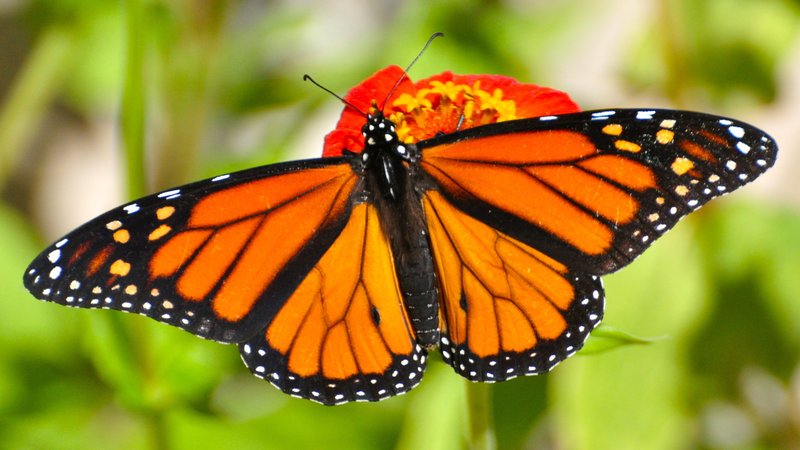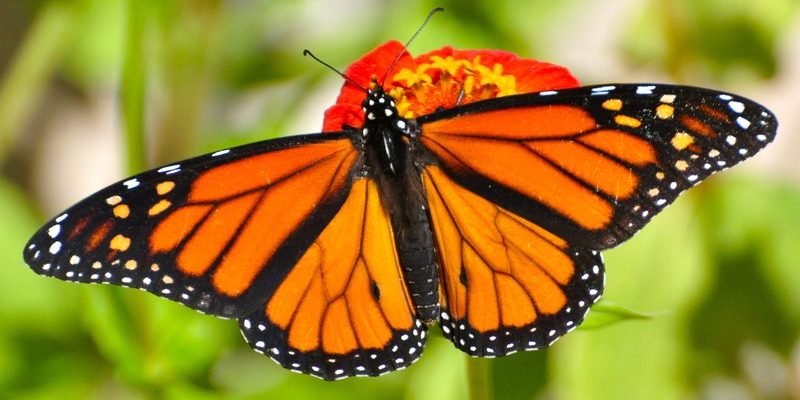
Imagine sitting down with a cup of coffee, chatting about how scientists track these delicate creatures. It’s like piecing together a giant puzzle, where each discovery adds depth to our understanding of the natural world. From tracking the monarchs’ migratory routes to studying their breeding habits, researchers dive deep into the lives of these insects, uncovering insights that stretch far beyond the butterfly garden. Here’s a closer look at how scientists have studied the monarch butterfly over the years.
The Monarch’s Migration: A Marvel of Nature
One of the most captivating aspects of the monarch butterfly is its migration. Each year, millions of these butterflies travel from North America to central Mexico, covering distances of up to 3,000 miles. This migration is not just a leisurely cruise; it’s a complex journey filled with challenges. Scientists have used various methods, including tracking devices and citizen science initiatives, to study how monarchs navigate these vast distances.
Researchers have learned that monarchs use environmental cues such as the position of the sun and the Earth’s magnetic field. It’s like they have an internal GPS! Moreover, they’ve discovered that different generations of butterflies might follow slightly different routes. For instance, the first generation might leave their wintering grounds earlier than the last, making the timing of each group’s departure crucial for their success.
This migration is also a testament to their resilience, as monarchs face numerous threats along the way, from bad weather to habitat loss. Scientists are now working to create strategies to protect their migratory paths, emphasizing the importance of conserving these butterflies and their habitats.
The Life Cycle of the Monarch
The monarch butterfly undergoes an incredible transformation during its life cycle, which consists of four stages: egg, larva (caterpillar), pupa (chrysalis), and adult butterfly. Each stage presents unique challenges and offers insights into their biology. Researchers often study the monarch’s life cycle to better understand not only these creatures but also broader ecological principles.
Let’s break it down a bit:
- Egg Stage: The female monarch lays her eggs on milkweed plants, the only food source for the caterpillars. Scientists have conducted experiments to see how different conditions affect the hatching success of these eggs.
- Caterpillar Stage: After hatching, the caterpillars eat voraciously, growing rapidly. This stage can be observed in nature and lab settings, offering a clear view of their feeding habits.
- Chrysalis Stage: Once fully grown, the caterpillar forms a chrysalis. Here, fascinating changes occur inside, and researchers are still uncovering the details of this mysterious transformation.
- Adult Stage: Finally, the monarch emerges as a butterfly, ready to start the cycle again. Studies have shown that environmental factors during this stage can influence their lifespan and migratory success.
Understanding these stages helps scientists develop conservation strategies, especially since habitat loss greatly affects milkweed availability. Without milkweed, there’s no future for monarchs.
Citizen Science: Everyone Can Help
You might be wondering how regular folks can get involved in monarch butterfly research. Citizen science plays a vital role in studying these butterflies. Many organizations encourage people to track and report monarch sightings, migrations, and breeding patterns. It’s a simple way for anyone to contribute to scientific research!
Apps and websites allow people to log their observations, creating a wealth of data scientists can analyze. For instance, the Monarch Watch program engages volunteers in tagging monarchs. This tagging helps researchers track individual butterflies as they migrate. When you think about it, all those tiny migrations add up to significant scientific findings.
Additionally, many people participate in local conservation efforts by planting milkweed and creating butterfly gardens. These gardens provide critical habitat for breeding and feeding, helping to support local populations of monarchs. It’s a beautiful symbiotic relationship: you create a haven for the butterflies, and in return, they bring color and life to your garden.
Threats to Monarch Populations
Understanding the monarch butterfly also means recognizing the threats these creatures face. Over the years, scientists have documented various challenges, from habitat destruction to climate change. The loss of milkweed due to agricultural practices has been one of the most significant issues.
Monarchs are also affected by pesticides, which can be harmful not only to caterpillars but also to adults. Researchers are studying the impact of these chemicals, hoping to raise awareness and encourage practices that protect pollinators. In addition, extreme weather events, likely tied to climate change, can disrupt migration patterns and breeding success.
Another area of research involves how urbanization affects monarch populations. With cities expanding, understanding how to create butterfly-friendly spaces is becoming increasingly essential. Programs aimed at restoring habitats in urban areas have emerged as part of the solution.
The Role of Technology in Butterfly Research
Modern technology has transformed how scientists study monarch butterflies. GPS tracking, for instance, allows researchers to monitor the butterflies’ movements in real time. This data helps them understand migration routes and stopover points, enabling better conservation efforts.
Drones are also being used to survey large areas and gather data on habitat quality and butterfly populations. With the aid of AI and machine learning, researchers analyze vast amounts of information to make informed conservation decisions. It’s fascinating to see how technology and nature can work hand in hand, isn’t it?
Moreover, the use of genetic analysis has opened doors to new insights about monarchs. By studying their DNA, scientists gain a better understanding of their population dynamics, which can help identify distinct groups and their specific needs for conservation.
The Future of Monarch Butterfly Research
As we look ahead, the future of monarch butterfly research seems promising. Ongoing studies and conservation efforts are critical in ensuring these beautiful insects thrive. Scientists are continuously exploring new ways to monitor populations and protect their habitats.
Collaboration is vital in this journey. Conservationists, scientists, and the public must work together to safeguard monarchs from extinction. Innovative strategies include restoring habitats, promoting sustainable farming practices, and educating communities about the importance of these butterflies.
It’s crucial to recognize that the fate of the monarch is intertwined with the health of our ecosystems. By studying them more thoughtfully, we can advocate for environmental policies that protect not just monarchs but other pollinators, too.
In conclusion, the study of the monarch butterfly has revealed so much about these stunning creatures and the ecosystems they inhabit. From their remarkable migrations to the challenges they face, there’s much to learn and protect. By supporting ongoing research, creating butterfly-friendly gardens, and advocating for sustainable practices, we can all contribute to a brighter future for these amazing insects. So, the next time you see a monarch fluttering by, remember: there’s a whole world of science and story behind its journey.

